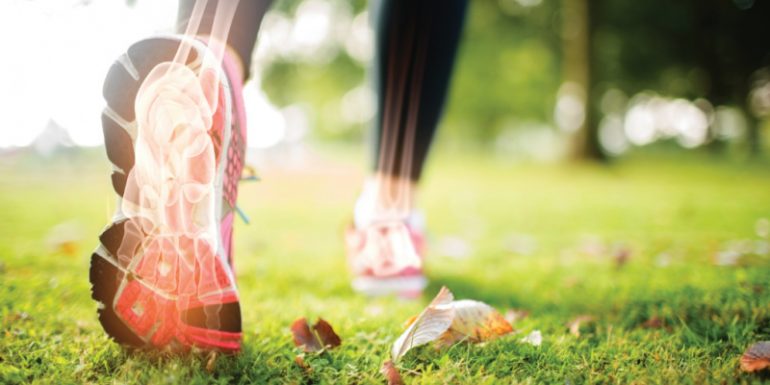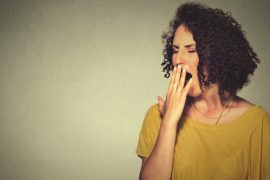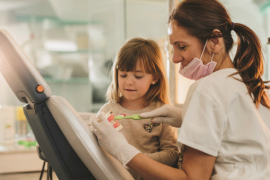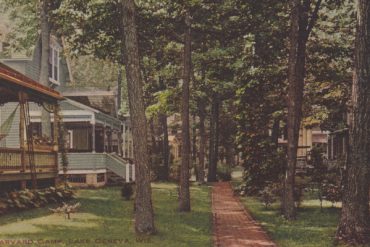By Shelby Deering
What’s a health condition that initially shows no symptoms but we all become prone to it after a certain age? If you guessed bone loss, you’re right. It’s something that might not be top of mind for you right now but as we age, bone loss — commonly referred to as osteoporosis — should be given a high priority, just like cardiovascular and neurological conditions.
“There are typically no symptoms in the early stages of bone loss,” says Dr. Bradley Fideler, an orthopedic surgeon at Mercyhealth. “But once your bones have been weakened by osteoporosis, you might have signs and symptoms that include back pain caused by a fractured or collapsed vertebra, loss of height over time, stooped posture and a bone that breaks much more easily than expected.”
PREDISPOSITIONS TO BONE LOSS
While all people are prone to bone loss, there are some risk factors to take into account.
“Just getting older is the biggest risk factor for bone loss or for getting fractures from bone loss,” says Anthony R. Ricci, DO, FAOAO, FAAOS, an orthopedic surgeon and director of sports health for Advocate Aurora Health System.
Dr. Ricci adds that bone is a living organ. It is constantly breaking down, while new bone replaces it. “In our mid- 30s, bone mass stops increasing; in our 40s and 50s, more bone may be broken down than is built up,” he says.
Both doctors share a number of risk factors for bone loss. They include:
- A family history of osteoporosis
- Low calcium intake
- Excessive alcohol consumption: “Two or more alcoholic drinks a day increases your risk of osteoporosis,” Dr. Fideler says.
- Tobacco use
- Chronic steroid use: “This affects bone metabolism and places patients at a higher risk for osteoporosis and bone loss,” says Dr. Ricci.
- Long-term use of oral or injected corticosteroid medications
- Eating disorders
- A sedentary lifestyle
- Gastrointestinal surgery: According to Dr. Fideler, procedures that reduce the size of one’s stomach or in which part of the intestine is removed can limit the amount of surface area available to absorb nutrients, including calcium.
Also, although osteoporosis is something that can affect both men and women, women tend to experience bone loss at a younger age than men due to menopause.
Dr. Fideler explains this process: “When you’re young, your body makes new bone faster than it breaks down old bone and your bone mass increases. After the early 20s, this process slows, and most people reach their peak bone mass by age 30. As people age, bone mass is lost faster than it’s created. Lowered sex hormone levels tend to weaken bone. The reduction of estrogen levels in women at menopause is one of the strongest risk factors for developing osteoporosis. Men have a gradual reduction in testosterone levels as they age.”
Additionally, Dr. Fideler says that one is at a greater risk of osteoporosis if they are white or of Asian descent.
Genetics can also come into play, which is why it’s key to share your family history with your doctor. Having a parent or sibling with osteoporosis puts you at greater risk, and that risk is even higher if your mother or father fractured a hip.
Lastly, “Some diseases can affect bone metabolism and calcium absorption, inhibiting a patient’s ability to perform weight-bearing exercises,” says Dr. Ricci.
THE RISKS
“The big risk is fractures,” says Dr. Ricci. “If bones are weak, minor injuries can lead to bigger problems, including fractures and breaks. These fractures and breaks most commonly occur in the wrist, hip and spine. These fractures can result in surgical procedures or chronic pain.”
Dr. Fideler says that hip fractures are often caused by a fall and can result in disability and even an increased risk of death within the first year after the injury. He goes on to say that the bones that make up your spine, or the vertebrae, can weaken to the point of crumpling, which can result in “back pain, lost height and a hunched forward posture.”
PREVENTATIVE MEASURES
While all of this might sound dire, there is good news: there are things you can do to prevent bone loss from happening in the first place, thanks to lifestyle changes and help from your doctor.
“A well-balanced diet is the most import- ant thing,” says Dr. Ricci. “It should consist of foods that contain good calcium sources and vitamin D.”
Dr. Fideler lists calcium-packed foods, like low-fat dairy products; dark, green, leafy vegetables; canned salmon or sardines with bones; soy products like tofu; and calcium-fortified cereals and orange juice.
You can also take calcium and vitamin D supplements. “Vitamin D improves your body’s ability to absorb calcium and improves bone health in other ways,” Dr. Fideler says. He suggests that to get enough vitamin D to maintain bone health, “it’s recommended that adults ages 51 to 70 get 600 international units (IU) and 800 IU a day after age 70 through food or supplements.”
Keep in mind that people without other sources of vitamin D and especially with limited sun exposure might need a supplement. “Most multivitamin products contain between 600 and 800 IU of vitamin D,” says Dr. Fideler. “Up to 4,000 IU of vitamin D a day is safe for most people.”
Supplement dosing can vary from person to person, which is why it’s wise to consult with your doctor first before taking vitamin D.
Exercise is another way to combat bone loss, and in the process, it can help you maintain an appropriate body weight, something else that can stave off osteoporosis. Think weight-bearing exercises like weight training, walking, hiking and jogging — activities that have been proven to build strong bones.
Another preventative measure is a bone density test, which uses x-rays to measure grams of calcium and other bone minerals. Dr. Ricci says that since women are more affected, it’s recommended that they be screened at age 65 or older, or sooner if they have increased risk factors.
“The best way to prevent osteoporosis when you are older is to start when you are young by living a good, healthy lifestyle which includes weight-bearing activities,” Dr. Ricci notes. “No smoking, limited alcohol consumption plus a well- balanced diet that includes calcium and vitamin D is the key,” he adds.
CAN BONE LOSS BE REVERSED?
Let’s say that you’ve already been diagnosed with osteoporosis. Can you reverse it? Not completely, but you can prevent further bone loss.
Dr. Ricci says, “Treating osteoporosis involves healthy lifestyle choices such as a well-balanced diet and exercise. The goal is to stop bone loss and rebuild bone to prevent fractures. At times, further treatment with medications may be necessary. Some medications can help slow bone loss and others can help to rebuild bone.”
If you have an increased risk of fracture, Dr. Fideler says that the most widely prescribed osteoporosis medications are called bisphosphonates. Or there are monoclonal antibody medications which produce similar or better bone density results when compared to oral medications and are delivered via an injection every six months. Hormone- related therapy can be used as well.
The bottom line: whether you’re aiming to prevent osteoporosis from happening in the first place or trying to stop further bone loss, there are plenty of viable and effective options to explore with your doctor.





